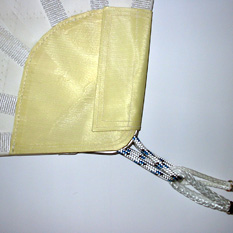

Those that do have a limited inventory of sizes. suppliers don’t even stock the brass liners anymore. Hardware for hand-sewn rings is getting scarcer every year. The leather in the jib clew protects the stitching from chafe. “Long and short” stitches as in this example spread out the strain, minimizing the cookie cutter effect, and look good as well. Us guys on the bench got pretty good at it. When I first worked in a sail loft, all the Dacron was relatively soft, and all the corner rings were hand sewn.

But in soft cloth and for traditional sails with relatively low stress in the corners they are an attractive option. The best handsewn ring cannot compete with hydraulically-pressed stainless steel rings for strength. Pushing even the smallest practical hand needle through it breaks lots of fibers.

#T CLEW RING PATCH#
In a loose footed sail, the clew patch is slightly enlarged to compensate. In fact, the sheet load will always be carried in a radial pattern originating from the clew, with most of the load carried by the clew ring. Beside making better low aspect and quadrilateral sails, softer cloth will allow the passage of a sailmaker’s needle without too many yarns bursting - and therefore invites hand sewing if the client wants that extra touch of authenticity for a traditional design.ĭepending on hand sewing for important parts of a sail - like corner rings or boltroping - is a poor idea in modern firm sailcloth. A common misconception, or at least exaggeration, is that an attached foot provides better support for the sail. Such cloth is woven to have a little more bias stretch (corner to corner), and treated with less filler resin and hard finishing. The only recommendation is that the pocket/covert at the clew most be properly made: durable and strong to make sure it will tolerate the banging against the rig and shrouds through tacks. Traditional sails are usually made of a softer Dacron or polyester. Just eye splice the sheets, loop and you are good to go. Whip the line firmly to maintain the loop.Sailmakers - Dabbler Sails - Sail Lofts - Sails for small boats - SailĪppendices - Useful Supplemental Information This extra piece should be the same diameter as the sheet.įirst, form a loop at the center of the single line to be used as jib sheets. This also means a dangerous hard object that can injure a crew in the head or eye.Ī better solution is to use a soft shackle made with the single jib sheet itself, whipping line, and a short, extra piece of line.


 0 kommentar(er)
0 kommentar(er)
